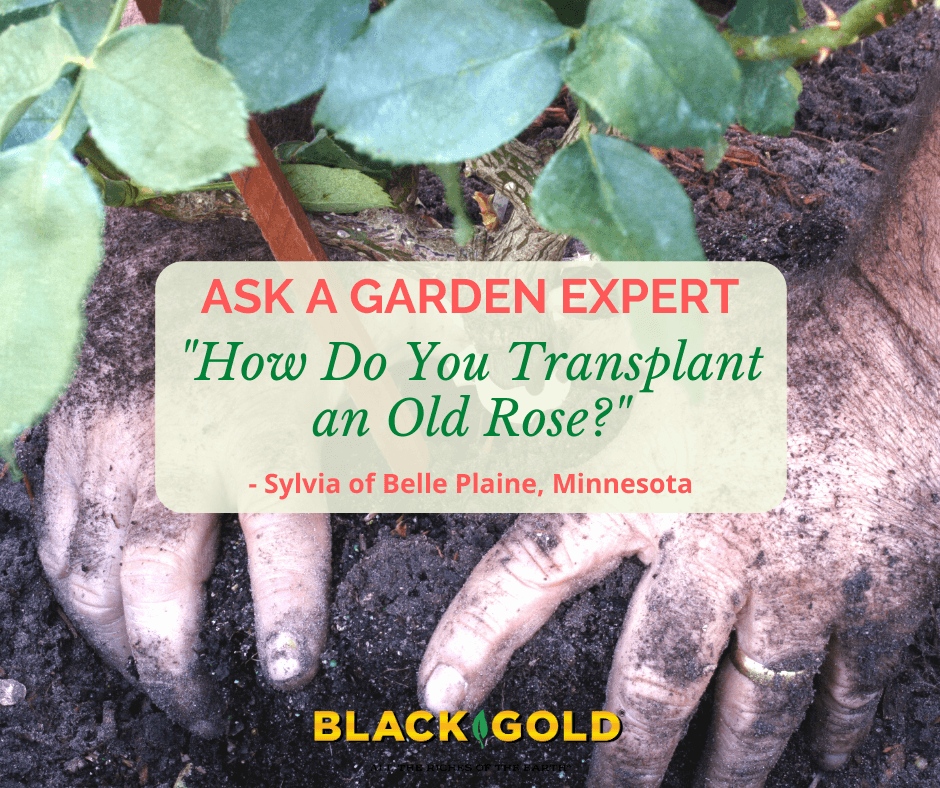“I have a 40-year-old rose bush that used to be a foot away from the foundation of my home that has gradually moved all the way up to the foundation and sends shoots up under the siding. I have tried to dig it out and pull it out but it refuses to give up and comes back every year. What can I do about it?” Question from Sylvia of Belle Plaine, Minnesota
Answer: Roses can be quite easy to transplant, with a little strength and elbow grease, and good tools. Spring is the best time to move them. Once yours is moved, I recommend planting it in a garden bed away from your home. Here are the tools and steps that I recommend for its transplant.
Tools: Sharp, flat spade, sharp pruners and/or loppers, burlap sheet and tarp, and wheelbarrow.
Steps:
- Prune back the shrub to approximately 12″ stems all around. (It will spring back quickly from its strong root system)
- Cut a rootball approximately 6-8 inches around the base of the plant. Make clean cuts all the way down with your sharp spade.
- Remove excess soil from one side of the excavated rootball, and place the soil on the tarp.
- Cut out around the rootball to a depth of around 12 inches, maybe more. Work hard to keep the soil ball and roots intact. This will help the plant better withstand transplant shock.
- Wrap the rootball with burlap and roll it into the wheelbarrow turned to its side. Right the barrow, and take it to its new garden spot.
- Dig a hole big enough to accommodate your rose. Be sure the spot is sunny and the soil well-drained and fertile. (Click here for more details on planting and siting trees, and click here to learn about the best soil and light for roses.)
Black Gold Garden Soil is an excellent amendment for newly planted roses. We also recommend feeding your rose with alfalfa meal to keep it blooming at its best.
Of course, there is a chance that you may not want the rose. If this is the case, dig it out, and dispose of it. Just be sure to fill the spots with quality soil and backfill before planting a new shrub in its place.
I hope that these tips help.
Happy gardening,
Jessie Keith
Black Gold Horticulturist


